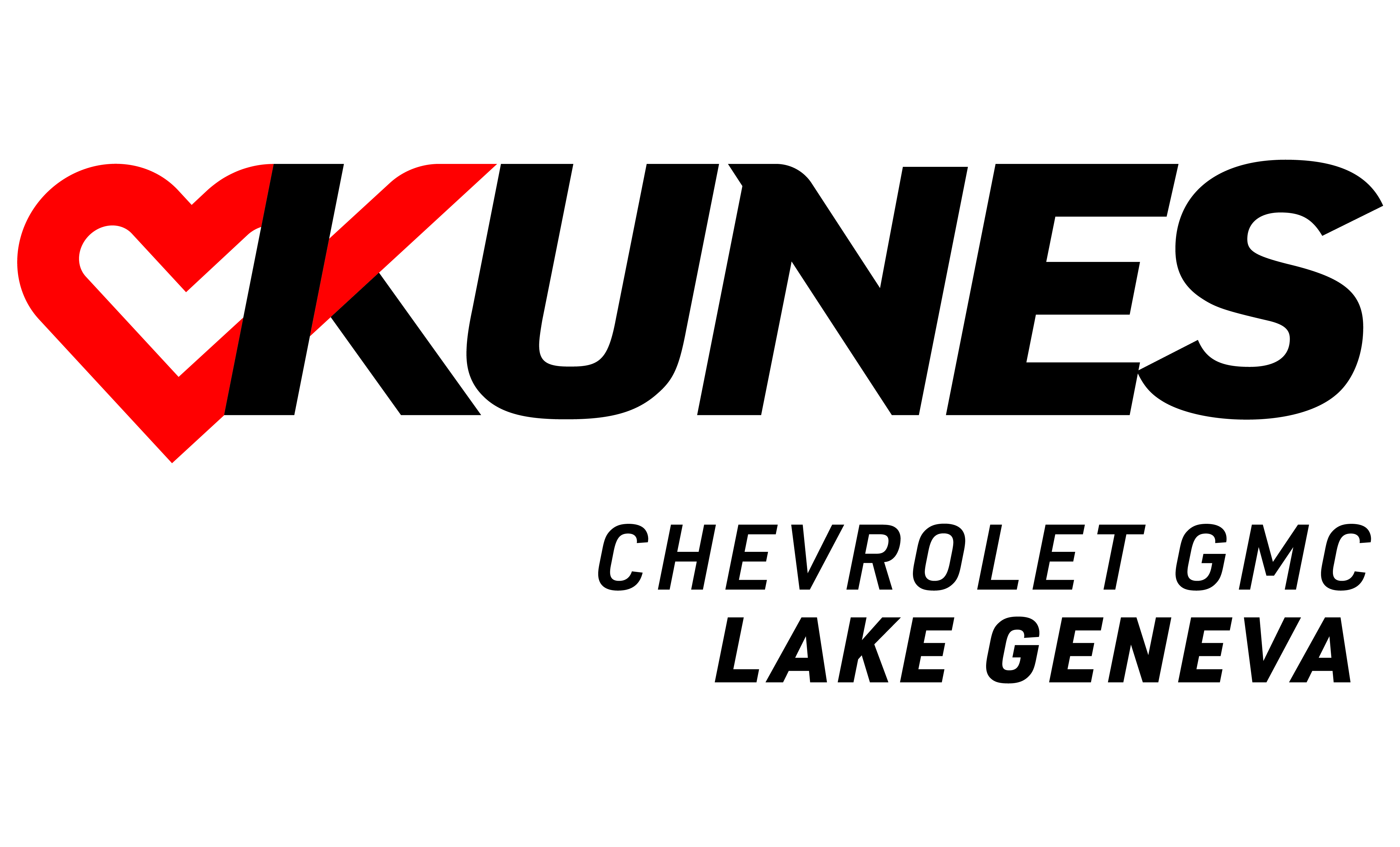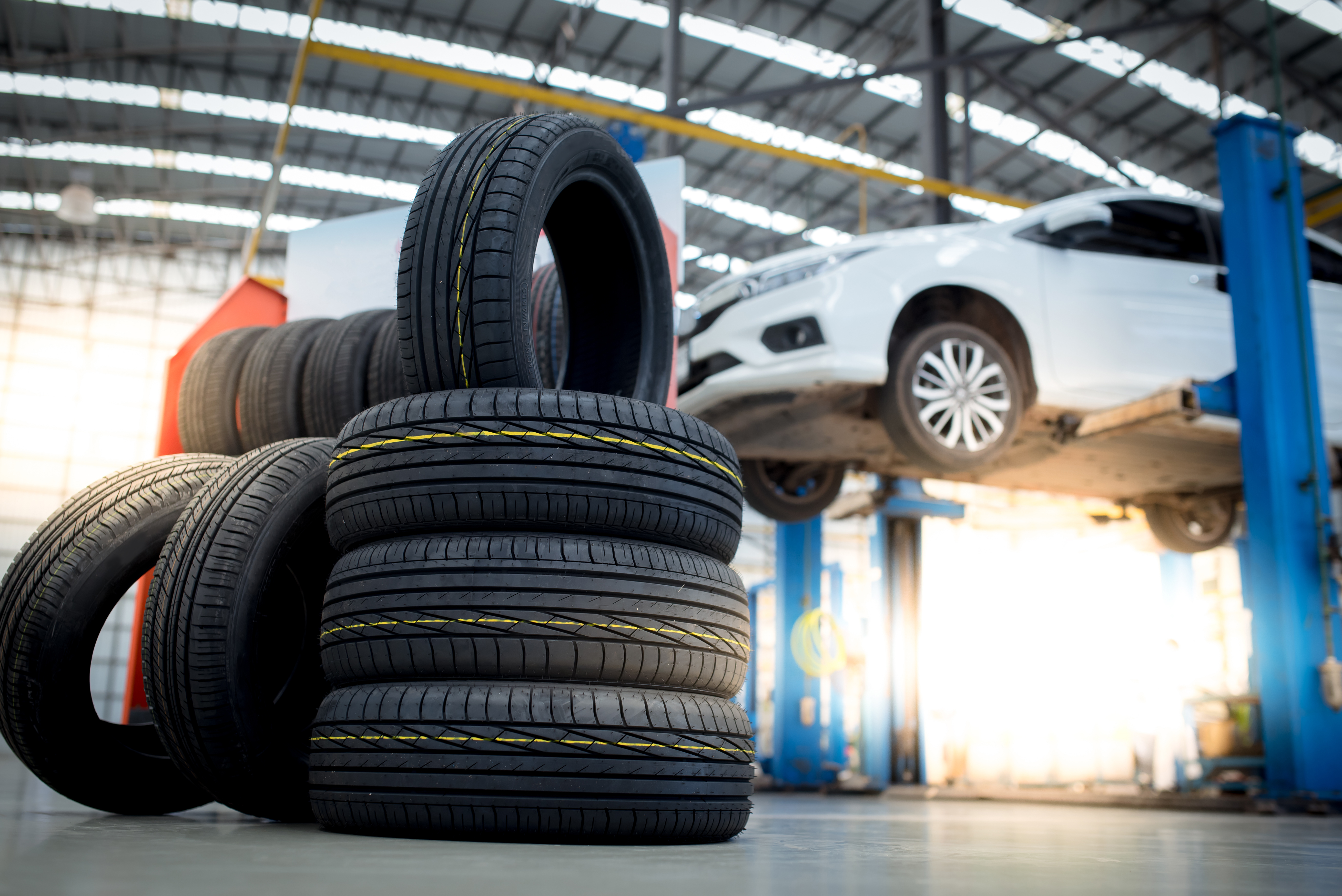
Quality Tires Near Lake Geneva, WI
Whether you are in the market for tire repair or replacement, our Certified Service experts can handle all of your tire needs. Use our Tire Finder Tool to start shopping for tires – simply enter your vehicle's year, make, model, and tire size. Not sure about your tire size? It's the combination of letters and numbers located on the side of your tire. Once you've selected the right set, schedule an appointment at Kunes Chevrolet GMC of Lake Geneva, WI.
These offers are available from the tire manufacturer when tires are purchased at a Chevrolet or GMC dealer. GM is not responsible for the processing or payment of these offers.
Maintaining Your Tires

What Causes Tire Wear?
Insert a penny (head first) into your tire tread. If you can see the top of Lincoln's head, you need new tires. If the top of Lincoln's head is hidden, your tread is deeper than 2/32”. On the tail side, if the top of the Lincoln Memorial is hidden, your tread is deeper than 6/32”.
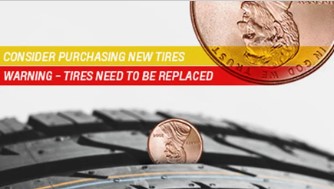
Measuring Tread Depth
A quick and easy way to check your tire wear is with a tread-depth gauge. These tools come in either digital or mechanical versions.
The easiest way to check wear on your tire is with a penny. Place a penny upside down in between the tire tread as shown on the right. If you see the top of Lincoln's head, the treads are worn and tire replacement is needed.
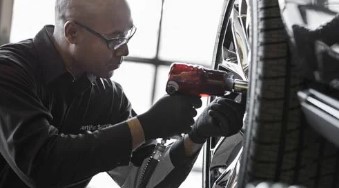
When to Replace Tires
Tread Wear indicators appear when the tires on ly have 2/32" or less of tread remaining. Rubber in tires ages over time. Other warning signs include:
- The tire cord or fabric is showing through the rubber
- The tire tread or sidewall is cracked, cut, or snagged deep enough to show cord or fabric
- The tire has a bulge or split
- The tire has a puncture, cut, or other damage that can't be repaired correctly
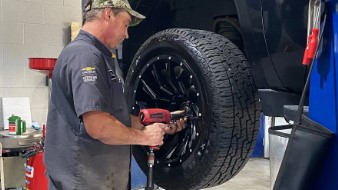
Wheel Alignment
Proper wheel alignment is key to prolonging the life of your tires. If your vehicle is misaligned, it can cause your tires to wear unevenly, and you may experience handling problems such as pulling or abnormal vibration.
Consider a wheel alignment check if there is unusual tire wear or the vehicle is significantly pulling to one side or the other. A tire that is out of balance often affects ride quality and can shorten the life of tires, bearings, shocks, and other suspension components. if the vehicle is vibrating when driving on a smooth road, the tires and wheels may need to be rebalanced.
Tire Rotation
It's a known fact that regular tire rotation extends the life of your tires and improves performance. Tires are rotated to achieve a uniform wear for all tires. Each tire performs different tasks (such as steering in front- versus rear-wheel drive), therefore tires wear at different rates. Tires should be rotated every 7,500 miles to prevent irregular tire wear.
It's important to rotate your tires according to the correct tire-rotation patter. Doing so will prolong the life of your tires and will reduce the risk of sudden tire failure. Front tires encounter different tasks than those on a rear-wheel-drive vehicle.
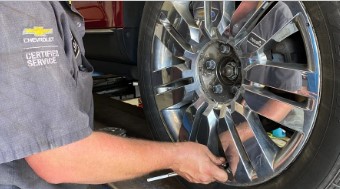
Tire Pressure
Check your tires at least once a month when the tires are cold, meaning the vehicle has not been driven for at least three hours or no more than 1 mile. The Tire Information Label, located on the inside of your doorframe, has the recommended cold tire pressure for your vehicle.
Inflation pressure maintenance of tires is critical for overall tire and vehicle performance. Maintaining the correct inflation pressure allows the tire to perform as intended, including for comfort, fuel economy, stopping distance, cornering, traction, tread wear, and noise.
Tire Pressure Monitoring System
The Tire Pressure Monitoring System is designed to warn the driver when low-tire-pressure conditions exist. A sensor measures tire pressure and temperature, then transmits data to the tire-pressure monitor. If the pressure in one or more of your tires is 25 percent or more below the vehicle manufacturer's recommended cold inflation pressure for tires, a warning indication will alert the driver.
Your Original Equipment TPMS sensor battery can last up to 10 years with normal use. When the TPMS battery fails, the sensor will need to be replaced.
If the Tire Pressure Monitor light appears as a blinking yellow lamp for more than one minute and stays solid, then diagnostic service is needed. If your TPMS is not functioning properly, it cannot detect or signal a low-tire condition.
If the Tire Pressure Monitor light comes on and stays solid with a check tire pressure, low tire pressure, or add air to tire message, then check and adjust all tire air pressures to the recommended levels. Next, drive the vehicle to turn the light off.
Tire FAQ
WHY IS TIRE ROTATION SO IMPORTANT?
Each tire on a vehicle performs a different task, causing them to wear at different rates. Regular tire rotation allows tires to wear evenly, maximizing tire life and allowing tires to be replaced in sets of four, which is preferable.
WHY IS TIRE PRESSURE IMPORTANT?
Improperly inflated tires are a leading cause of tire failure. Proper tire pressure helps a tire have optimum tread contact with the road, which improves traction and braking and reduces tire wear. Underinflated tires generate heat, which is the tire's worst enemy, so maintaining the right amount of air keeps temperatures where they should be.
HOW WILL I KNOW WHEN I NEED NEW TIRES?
You'll need new tires when the tread wear indicators—called wear bars—appear. These wear bars look like narrow strips of smooth rubber across the tread and appear when it's time to replace your tires. If you can see three or more tread wear indicators, you should replace your tires. Other ways to know when to replace your tires include cord or fabric showing through the rubber, cracks or cuts in the tread or sidewall deep enough to show cord or fabric, bulges or splits in the tire, and punctures or damage that cannot be repaired correctly.
Tread Wear Indicators to Look Out For
- Cord or fabric showing through the rubber
- Cracks or cuts in the tread or sidewall deep enough to show cord or fabric
- Bulges or splits in the tire
- Punctures or damage that cannot be repaired
WHERE SHOULD I GO TO GET THE RIGHT TIRES FOR MY VEHICLE AT THE RIGHT PRICE?
Our Certified Service experts can recommend tires that are right for your vehicle, your driving habits, and your budget. You can start searching for new tires right now with our Tire Finder Tool above. It's a quick and easy way to find tires for any vehicle. Once you've selected the right tires, you can schedule an appointment. We employ factory-trained technicians who use state-of-the-art technology and equipment to help keep your vehicle running like new.

